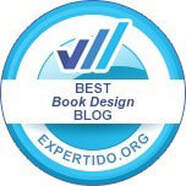|
Becoming a highly motivated author is a journey that involves passion, discipline, and a keen understanding of the craft of writing. Here are some essential strategies to help you become a highly motivated author.
Discover Your Passion for Writing The first step to becoming a motivated author is to discover and nurture your passion for writing, passion is the driving force that will keep you going, even when you face challenges. Start by asking yourself why you want to write. Is it to tell stories, share knowledge, express your thoughts, or impact others? Understanding your motivation will give you a clear sense of purpose and keep you inspired.
0 Comments
Guest post from Tina Martin
Embarking on the journey of self-publishing is both an exhilarating and daunting endeavor. For many authors, it represents a direct path to sharing their work with readers while maintaining creative control. However, the complexities of the process can often overshadow the excitement. This comprehensive guide, presented by JD&J Book Cover Design, is designed to equip you with the essential strategies and knowledge to transform your manuscript into a published book that captivates readers and stands tall in the vast landscape of literature. A well-crafted sales pitch for a book is a powerful tool that can capture potential readers’ attention and convince them to make a purchase. Whether you’re an author promoting your own work or a bookseller championing a new title, an effective pitch requires a combination of strategic communication, genuine enthusiasm, and a deep understanding of your target audience. Here’s a comprehensive guide on how to create a compelling sales pitch for a book.
Guest Post from Dean Burgess
Navigating today's constantly shifting landscape requires a wellspring of creativity. This is true for anyone from artists and writers to entrepreneurs and professionals across industries. Cultivating and revitalizing your creative vigor is beneficial; it's necessary for innovation and staying competitive. Embrace these transformative strategies from JD&J Book Cover Design to infuse your creative endeavors with new vitality and enhance your potential for success. As a self-publishing author, you’ve poured your heart and soul into writing a compelling nonfiction book on finance. You understand the importance of providing valuable insights and guidance to your readers. However, before they can benefit from your wisdom, you need to grab their attention with a captivating blurb. Crafting a successful blurb is essential for enticing potential readers and driving sales. In this guide, we'll explore how to write a blurb that hooks your audience and convinces them to dive into your financial masterpiece.
As a self-publishing author, you’ll understand the importance of making a strong first impression. And your book's blurb is a powerful gateway to gaining potential readers, providing them with a glimpse into the captivating world you've created. A well-crafted blurb can be the difference between a browser scrolling past your book and a reader eagerly clicking "Buy Now." In this guide, we'll explore the key elements of writing a captivating and engaging blurb that entices readers to dive into your fiction masterpiece.
As an author, the journey from concept to publication is nothing short of epic, but once your book is ready to meet its readers, the real challenge begins in its advertising. Crafting an advertisement strategy isn't just tossing your work into the abyss of the market; it's about targeted storytelling to your potential audience.
That being said, here is a tried and true method to advertise your book successfully. Embarking on the self-publishing journey is a thrilling adventure, you've poured your heart and soul into your manuscript, navigated the intricacies of editing and formatting, and successfully hit the "publish" button. Yet, as your book makes its way into the world, a familiar and insidious doubt begins to creep in — imposter syndrome.
In the vast landscape of the literary world, book reviews serve as beacons of guidance for both authors and readers alike. They play a crucial role in influencing potential buyers, building an author's reputation, and fostering a connection between writers and their audience. In this blog post, we'll explore the significance of book reviews and provide actionable tips on how to secure them for your book.
The Significance of Book Reviews: Visibility and Credibility: Book reviews act as a powerful marketing tool, increasing the visibility of your book in a crowded market. Positive reviews lend credibility to your work, making it more appealing to potential readers. For an author, the launch of a new book is a momentous occasion that marks the culmination of months, or even years, of hard work and dedication. A well-executed book launch and signing event can create a buzz, generate excitement, and significantly boost the visibility of a new publication. Here's a comprehensive guide to planning a successful book launch and signing event that will leave a lasting impression on your readers and the literary community.
Set Clear Goals and Objectives: Begin by outlining your goals for the event, are you looking to increase book sales, build a fan base, or simply celebrate the completion of your latest work? Understanding your objectives will help you make informed decisions throughout the planning process. |
JD&JCategories
All
Archives
July 2024
All information within this website (including its blog) is published in good faith and for general information purposes only. JD&J Design LLC does not make any warranties about the reliability and accuracy of this information. Any action you take upon the information in this website is strictly at your own risk. JD&J Design LLC is not liable for any losses and/or damages in connection with the use of this site and information.
|













